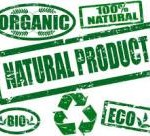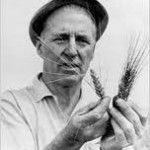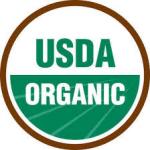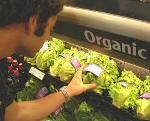A firm belief in organic food benefits has been held by farmers and consumers since it arose as a response to the “Green Revolution” in the 1940s. Today, anything with the word “green” attached brings to mind ecology and positive initiatives to improve our surroundings. In today’s society, green is good.

This wasn’t always so. The Green Revolution is what organic farming continues to fight against today, 70 years later. From the 1940s to the 1970s, “green” did not have the same meaning it does today. The goal then was to make the entire world green in order to feed the hungry and starving.
 “The Man Who Saved A Billion Lives” is Norman Borlaug. His goal was a noble one. He wanted to empower people to grow their own food and eradicate starvation on a global level. To accomplish this, he created high-yield disease resistant wheat, synthetic fertilizers, hybrid seeds and pesticides. This was to be the revolution that made the entire planet “green”.
“The Man Who Saved A Billion Lives” is Norman Borlaug. His goal was a noble one. He wanted to empower people to grow their own food and eradicate starvation on a global level. To accomplish this, he created high-yield disease resistant wheat, synthetic fertilizers, hybrid seeds and pesticides. This was to be the revolution that made the entire planet “green”.
He was decorated with the Nobel Peace Price, the Presidential Medal of Freedom, the Congressional Gold Medal as well as India’s second-highest civilian honor, the Padma Vibhushan. He truly did save billions from starvation.
Even the greatest plans have a down side. The Green Revolution started in the 1940s had unexpected consequences. Hybrid and genetically modified seeds send their pollen on the wind over many miles. These plants were changing the nature of ALL plants down wind. Synthetic fertilizers change the ecosystem of rivers and streams from farm runoff. Pesticides kill pests but are also suspected of harming the bees that pollinate plants, ultimately providing our food.
The response for many people is to examine organic food benefits over the high-yield industrial farming techniques created by Borlaug. From the 1970s to the present, it’s been believed that food grown without modified seeds, naturally fertilized, without added chemicals was the best tasting, healthiest, and most nutritious. Selecting, storing and cooking the freshest foods is covered in-depth during my FREE webinar, How To Cook Fresh in 5 Simple Steps.
 According to the US Department of Agriculture, any food promoted as “organic” must “be produced by farmers who emphasize the use of renewable resources and the conservation of soil and water to enhance environmental quality for future generations. Organic meat, poultry, eggs, and dairy products come from animals that are given no antibiotics or growth hormones. Organic food is produced without using most conventional pesticides, fertilizers made with synthetic ingredients or sewage sludge, bioengineering, or ionizing radiation.”
According to the US Department of Agriculture, any food promoted as “organic” must “be produced by farmers who emphasize the use of renewable resources and the conservation of soil and water to enhance environmental quality for future generations. Organic meat, poultry, eggs, and dairy products come from animals that are given no antibiotics or growth hormones. Organic food is produced without using most conventional pesticides, fertilizers made with synthetic ingredients or sewage sludge, bioengineering, or ionizing radiation.”
However, recent studies have shown that the effort and expense of organic farming is not worth the results. A study published in the Annals of Internal Medicine stated that organic food does not taste any better, nor does it have additional nutritional value over conventional farming.
This 2:27 Video explains the difference between nutritious and organic:
That’s a shock to most people because they associate the word “organic” with “nutritious”. There’s organic sugar, but it adds zero nutrition to your diet. Conventionally grown broccoli WILL offer the necessary elements you need.
The weight of the “organic” label is an arduous one on many farmers. Many of the growers I’ve visited provide wholesome and nutritious foods but use a naturally occurring fertilizer that precludes them from using the organic label.
Tim Bass grows the best tomatoes I’ve ever tasted, but he can’t call them organic. I visited Momeyer, North Carolina and Tim’s indoor tomato farm in what I called “The Farmers Secret To Growing Tomatoes In Winter“. Tim plays Mother Nature by growing wholesome tomatoes without pesticides. He uses predator insects. “Good bugs to eat the bad bugs”, as he puts it. He purchases bee hives to pollinate the plants and lovingly controls all aspects of their growth. However, he uses a liquid fertilizer so his tomatoes are not technically organic.
Many farmers still give organic food benefits but aren’t able to adhere to all the requirements of the label. They feel the term organic has been stolen by larger corporations who walk around the strict definitions of the standard.
 Note that a label that reads “organic” is not saying everything. Ninety-five percent of the ingredients in a product advertising itself as organic must be such. So, what about the other five percent? Corporations have lawyers and development budgets to keep exactly within the laws but not the intent of providing the most wholesome food.
Note that a label that reads “organic” is not saying everything. Ninety-five percent of the ingredients in a product advertising itself as organic must be such. So, what about the other five percent? Corporations have lawyers and development budgets to keep exactly within the laws but not the intent of providing the most wholesome food.
I’d rather have a tomato from Tim Bass that was given a liquid fertilizer and raised with love and care than a corporate tomato from 1500 miles away, picked unripe and stocked at my grocery store. Sure, the factory farm tomato did not use fertilizer, but it did not help my local farmer, nor provide the best ingredient possible.
Choosing your food strictly on an organic label ignores the many other concerns about the source of food. An item might be organic but uses hundreds of gallons of gas and jet fuel to arrive at your store. An item that does not have an organic label isn’t necessarily laden with deadly chemicals and it’s no less nutritious or flavorful than one using the organic sticker.
In my opinion, organic food benefits are not worth the effort or cost. I believe LOCAL food is worth a few dollars and a few miles more. You may disagree. Which side are you on? Do you insist on organic, local, or is it all the same to you? Leave your comment below:


My mother was a home economics teacher. I remember her telling me about a meeting that she attended in the late ’60s when “organic” was just coming into use. A major food manufacturer was discussing organic foods, when they made a comment like the following, “…of course as chemists, we know that all food is organic…”. Over 40 years later, as a biochemist, I found the statement quite telling. The sole criteria for a compound to be considered organic, is that it must contain carbon. Sugar is organic, just like gasoline or plastic.
Hi Pat!
Thank you for your comment. I agree with you that the word “organic” has been distorted from it’s proper definition. It’s been changed from a biological term to a marketing device.
It’s sad that two items you list above are no longer around. The first being major food manufacturers even discussing wholesome foods, and the second is the loss of Home Economics in most schools. I took Home Ec as a kid and learned to sew, repair things, and apply etiquette. Your Mom supplied highly valuable information shaping the lives of future adults.
About nutrition and comparing organic to non-organic: The soil is the source for nutrients for all plants. If the only fertilizer use is 10-10-10, that’s all the plant has to work with even from organic sources.
A study that was started over 50 years ago had confirmed that due to “modern” practices, you’d have to eat over 2 apples to get the same nutrients that were in an apple back then. Please check out Back to Eden Film’s website for more info on this and how to heal the land. I’m currently working toward healing my soil which means lots of good horse manure and well composted chicken manure which are from animals right here on our property. Also lots and lots of mulch from most anywhere I can get it. Gotta take care with that since much of this is road side clearings which may have been sprayed with herbicides (when in doubt, these are used for walkways and areas that don’t produce edibles).
A strawberry grown as naturally as possible in healthy soil should not only taste better but have more nutrients than anything commercially grown, organic or not. Organic practices focus too much on what’s not used versus what should be used. They have to make a profit, which isn’t wrong but we consumers don’t want to pay even more than we already do. 🙁 We have to keep making better choices, constantly looking for better sources and supporting those who are also doing this.
Hey Vivian!
Thank you for the informed and interesting comment. I’ve heard the same statistic that the overall nutrition of our food has declined over the past decades. The goal of food producers has become quantity over quality.
“Organic practices focus too much on what’s not used versus what should be used.” – Very well said!
Although the nutritional content (vitamins and minerals) may be similar, the big value with organic is in what you are not getting. I am a person who has survived breast cancer most likely caused by pesticides. This is not an off the cuff accusation but an acknowledgement that I come from the county with the highest breast cancer rate in the world: Suffolk County, New York. It is highest specifically among those who lived there in the early to mid seventies, which I did. There is a very good chance that the cause of the thousands upon thousands of cases in that area are a result of something that was used on the potato farms in the area at the time. Organic fertilizers are allowed in organic farming, just not synthetic ones where the long term results are unknown. Similarly, bio-engineered and genetically modified crops can not be labeled organic. These are not the result of hybridization like introduces this boy plant to this girl plant but the actual splicing of DNA from different types of organisms to create a new organism that has never existed on this planet before. It could involved splicing animal DNA into plant DNA something that could never happen naturally. As you say, this new DNA can blow over fields for miles around. Whatever anyone says, it is impossible to predict the safety of releasing an organism into the wild that has never existed on this planet before. What are the results 20, 30, or even forty years down the line? Who could know since these things haven’t existed for that long. I am sure they thought DDT was safe at the time but we have to admit at some point that we don’t know what we don’t know and are gambling with the whole planet. Personally, I will keep with the same old cow poop for fertilizer rather that listen to the bull poop of for profit business like Monsant spewing how they can guarantee the safety of some new organism they just created in the lab. Yes organic is worth it in many cases. It is worth knowing however what are the dirty dozen and clean fifteen. Those plants which retain the most pesticide residue and those that have very little. Onions for example, use very little pesticides normally to grow pest free. The organic is probably very similar (if not the same) as the conventionally grown. Potatoes on the other hand, retain a very high level of the pesticides that are used on them.
Hi Laura!
Thank you for the additional information. I grew up on Long Island and am very familiar with what the potato farmers did in the 1970s. When you add over-fishing and the pollution of bays and waterways, we really screwed up some of the most fertile food-producing areas in the eastern US.
I agree. I look more for the Non-GMO verified label than the organic label. I stopped trusting the organic label after that e coli break out in organic spinach. They were using manure from toxic cows and still were organic? I buy at the farmers market, local as possible which often means Florida instead of California. I try to grow what I can especially things like kale and Swiss chard. I save a bit that way.
That’s a good strategy, Vivian.
The “organic” label has been co-opted by large corporations. Buying local from people who interact with the end-user is the best way to assure your food is fresh and wholesome.
If you truly believe that non-organic food is just as nutritious as organic, I’ll come visit you in the hospital.
Hi Michael!
There can be many advantages to organic food, but a higher level of nutrition has been proven NOT to be one of them. Nutrition and wholesomeness are two separate debates. With organic food you may avoid pesticides and unnatural fertilizers, which many believe WILL put you in the hospital. But, a strawberry is a strawberry, no matter how it’s grown. The nutritional profile is the same.
See Laura’s comment above.
While I agree to a point with much of this post, it needs to be pointed out that one of the main reasons “organic” has lost most of its meaning is from the USDA allowing the Organic label to be corrupted by the same large conglomerates that the lable was created to differentiate from.
Many good farmers now ( i.e. Joe Salatin of Virginia as an example) raise to standards that are “beyond organic”.
How can a consumer know anymore? It’s difficult to impossible and thats why Knowing Your Farmer, buying at farmers markets, or growing your own Backyard Farm have become so crucial for us to take back control of our food system.
I would suggest that anyone who as not seen “Food, Inc” take time to view it. It is even on Netflix.
Because of what I have learned from you Todd, I have become much more aware of what I am growing, what I am eating, and most importantly, how it affects my health.
Thanks, Todd.
PS: I find it interesting that the rise in many diseases coincide with the increased use of Chemicals in fertilizers after the end of WW II.
Thank you for the contribution, Steve.
I agree, EVERYONE should watch the movie “Food Inc”, or read anything from Michael Pollan to further educate themselves.
In the end, everyone must make the decision that’s right for THEM.
I’ve seen a documentary on how genetically altered seeds blew onto an unsuspecting farmers crop. The corporation who owned the patent of the seeds sued the farmer for having them grow on his land. This happened to a few farmers who went broke with legal fees.
Any organic food grown by a large corporation should be avoided as they aren’t really growing it to help people. They just want to secure the majority market share before the little guy does. I’d put my money on the corporations putting something unhealthy in organic produce that is technically legal and “organic”
Hey Fred!
If you’d like to hear something very ironic, I’d tell you that I was the General Manager of the corporate cafeteria at Aventis Cropscience many years ago. They’re the ones you’re talking about. They created “starlink” corn. When the corn went to pollen, it blew onto other farmer’s fields. The corporation then responded aggressively by suing the farmers for intellectual theft. That’s like a balloon from a birthday party blowing into your back yard and being accused of crashing the party 50 miles away.
Corporations with large amounts of money can only be fought by depriving them of your money. Buy fresh, buy local, avoid the corporations.